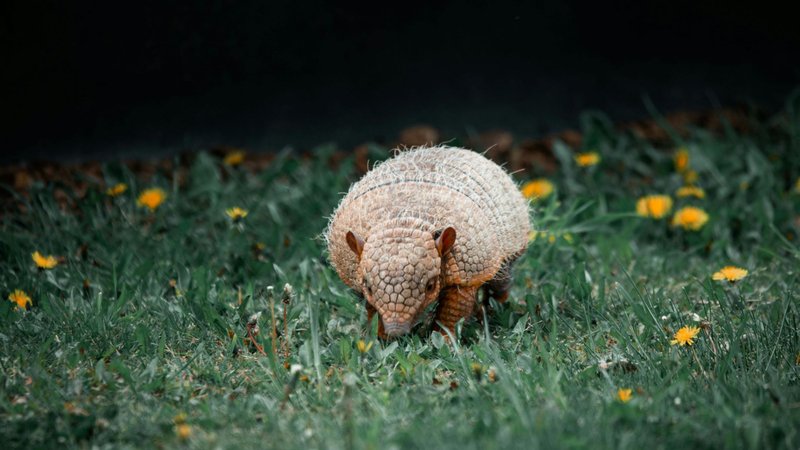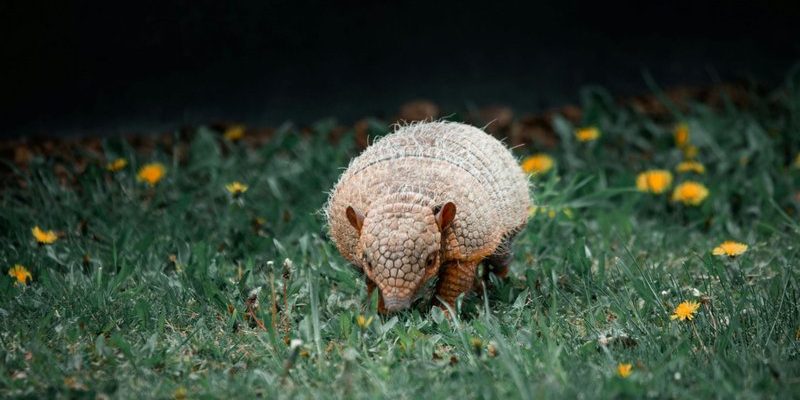
Understanding how these creatures eat and hunt is like peeling an onion—there are layers to uncover! From their preferred food sources to their intriguing foraging techniques, there’s a lot going on beneath that tough shell. You might be surprised at how these small mammals have carved out a niche for themselves in the wild. So, grab your metaphorical shovel, and let’s dig deeper into the diet and hunting strategies of the armadillo.
What Do Armadillos Eat?
Armadillos are often described as opportunistic eaters. This means they don’t stick to a strict diet but rather munch on whatever is available. Think of them as the culinary adventurers of the animal kingdom. Their diet primarily consists of insects, worms, and other invertebrates. They’re particularly fond of ants and termites, which they hunt with impressive efficiency.
In addition to insects, armadillos also enjoy a variety of plant material. They’ll happily snack on fruits, vegetables, and even some fungi. Imagine wandering through your garden and finding an armadillo snacking on ripe berries. They have a knack for sniffing out tasty treats hiding beneath the surface. You might be wondering how they find this food. Well, let me explain.
How Do Armadillos Hunt for Food?
Armadillos have developed some pretty nifty skills to hunt for food. They rely heavily on their keen sense of smell, which is their secret weapon. Their noses are highly sensitive and can detect the faintest aromas of insects buried in the soil. Picture them as tiny detectives, snooping around for clues of a meal.
Once they locate their food, armadillos use their strong claws to dig. These claws are not just for show—they’re built for digging! They can quickly burrow down into the ground to uncover a treasure trove of insects. This digging ability is similar to that of a child unearthing a buried toy in the backyard, but instead, it’s a feast for the armadillo. They can dig down about 3 feet deep, depending on what they’re after!
The Role of Nighttime in Armadillo Hunting Strategies
Most armadillos are nocturnal, meaning they prefer to do their hunting at night. Imagine a little armored critter scampering around under the cover of darkness, hunting like a seasoned night owl. This behavior helps them avoid predators and harsh daytime heat. At night, it’s cooler, and their food sources, especially insects, are more active.
To find food, armadillos often follow a specific routine. They explore their territory in search of scents, using their specialized sense of smell to guide them. You might spot them wandering around, munching on insects or digging softly in the earth. Nighttime hunting allows them to avoid competition with other foragers and better tap into their food sources when they’re most abundant.
Why Do Armadillos Have a Unique Diet?
The diet of armadillos is closely tied to their habitat. They thrive in environments like forests, grasslands, and scrublands where they can find ample insects and plant materials. The adaptability of their diet is essential for survival. If you think about it, it’s like having a fallback plan. If one food source dries up, they can pivot and feast on something else.
Furthermore, their unique diets help maintain the ecosystem. By eating insects, they control pest populations, acting as natural pest controllers. When you think of it, they’re like the small but mighty warriors of the ecosystem, helping keep things balanced. If they weren’t around, pest populations might explode, leading to larger issues in their habitat.
Armadillos and Their Unique Hunting Behaviors
Armadillos also exhibit some interesting behaviors while hunting. While most of their food is found underground, they sometimes forage on the surface, especially for fruits. Imagine a little armadillo ambushing a fallen apple with determination! They tend to be quite solitary creatures, preferring to hunt alone rather than in groups.
Some armadillos can even roll into a ball when threatened, using their hard shell for defense. While this behavior is more common in other species, it still showcases their unique adaptations. You could say they have a variety of tricks up their sleeve—or shell, if you want to be literal!
The Impact of Seasons on Armadillo Diets
Seasons play a significant role in the diet and hunting strategies of armadillos. In spring and summer, food is plentiful, with insects and fruits readily available. However, as temperatures drop in fall and winter, their food sources diminish. This change pushes them to adapt their hunting strategies. During the colder months, they may dig deeper into the ground or explore areas where food is less accessible.
In winter, they might rely more on burrows and underground cavities, creating temporary homes to stay warm and search for food. Just like we might stock up on snacks for a long movie night, armadillos adapt their behavior to cope with seasonal changes. It’s a clever survival strategy that shows their resilience.
So, there you have it! Armadillos are truly fascinating creatures with a unique approach to their diet and hunting strategies. From their diverse diet that includes everything from insects to fruits to their incredible digging abilities, they thrive in various environments. Their ability to adapt to changing seasons and their nocturnal habits make them specialized hunters, proving that being resourceful is key in the wild.
Next time you see an armadillo, take a moment to appreciate its hard work. They aren’t just cute little animals with tough shells; they play an essential role in maintaining the balance of their ecosystems. Understanding the diet and hunting strategies of the armadillo not only deepens our knowledge of these creatures but also highlights the intricacies of life in nature.

